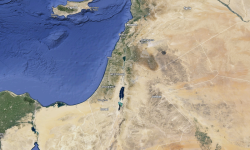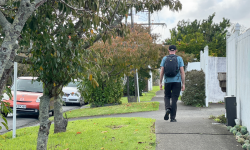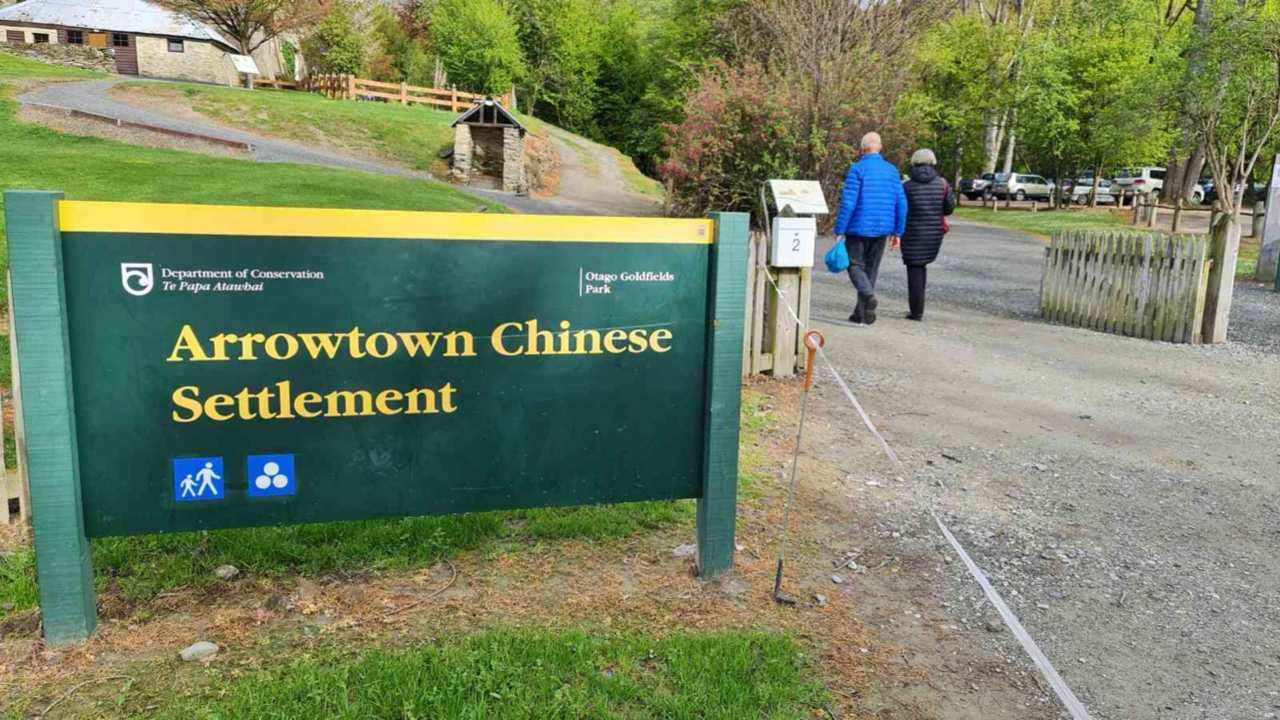
Jonan Castillon is Pastor of Oamaru Baptist Church and part of the Baptist NZ Editorial Advisory Group. This article is revised from the Multicultural Response Ministry blog where lessons from the multicultural ministry from the 1880 Arrowtown Chinese Settlement mission are considered as well as their relevance for today.
For whatever was written in earlier times was written for our instruction, so that through perseverance and the encouragement of the Scriptures we might have hope. (Romans 15:4)
We had the chance to revisit Arrowtown in October 2021. We toured the historic Chinese Settlement this time.
"The Arrowtown Chinese Settlement is a heritage-listed, historic village in Arrowtown, New Zealand, set up by Chinese people during the Otago Gold Rush of the 1860s. The Settlement is sometimes called a village restored and is now a popular tourist attraction. It is close to Arrowtown on the banks of Bush Creek, a tributary of the Arrow River". (Source: Wikipedia).
Let me briefly share the story of these Chinese migrants of the 1860s based on the information boards installed in the Village. In sharing, I have no intention of highlighting the mistakes made in the past or passing judgment on any ethnic group. Instead, I want to emphasise their resilience and perseverance in the face of adversity, which is truly admirable.
I aim to glean lessons from history and develop another example of using faith-wisdom as a powerful tool. Yes, we are all God’s work in progress, and through faith, we can gain profound insights into our past.
It is important to note that the 1860s was quite a different time. Information could have been more extensive. There was no digital technology then that we now have that could have enabled the early New Zealand settlers to know more about one another’s ethnicity and culture.
I commend the Department of Conservation for reconstructing and restoring the hut ruins at the Arrowtown Chinese Settlement and providing information boards narrating their stories. I took the time to read some of them. We can only imagine the hardships and challenges these Chinese migrants went through during that “golden” era.
The restored and reconstructed dwelling remains serve as a grim but hollow reminder of New Zealand life once upon a time, which, for me, is a precious treasure, much more precious than the gold they mined.

Visiting the site and reading the stories of the Arrowtown Chinese gold miners gave us a sad feeling of knowing and understanding what they all went through.
Posting the narratives on this hallowed place shows New Zealand is on its journey to come to terms with its past.
I see the information boards’ desire to inform and educate the present generation on the right thing to do, especially in the context of justice and the eyes of the Almighty God.
Nevertheless, their story presents valuable lessons for a church that wants a robust, meaningful, and growing multicultural ministry.
As Filipino migrants, we faced many challenges, but they paled in comparison to those of these early Chinese migrants.
Learning about them makes me think they were New Zealand’s multicultural trailblazers. In the 1860s, they presented a multicultural ministry challenge to the European settlers and, most of all, the church people.
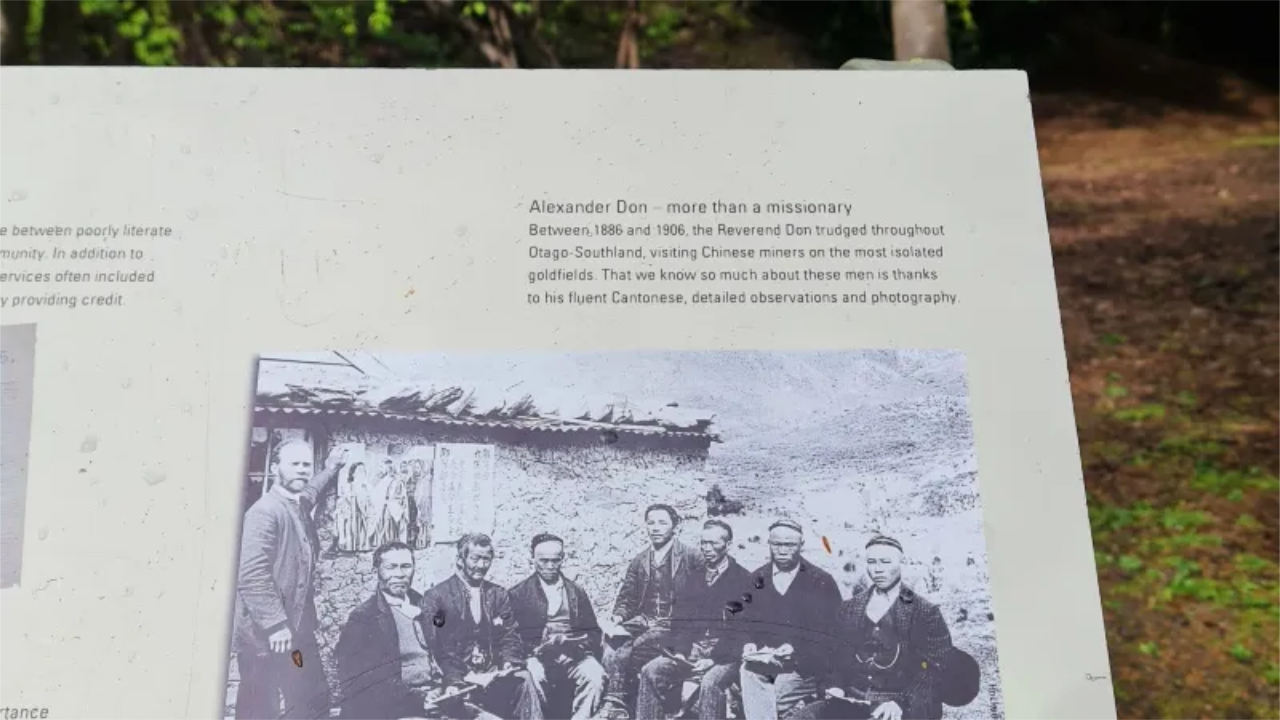
For those who have yet to go to the Arrowtown Chinese Settlement, please allow me to mention some narratives written on the information boards.
Peasant farmers seeking wealth and honour
"Almost every Chinese gold seeker came from the Cantonese province of Guangdong in South China. Here, life for small farmers was a struggle for survival against over-population, unemployment, disease, and political turmoil.
Gold-seeking offered an escape from poverty. Those who could help finance another to leave gave the most precious gift of “li shung” (to give life). From the mid-19th century, a steady stream of migrants headed for goldfields in the United States, Australia, Canada and, from 1865, New Zealand".
Invited but unwelcome – the harsh reality of goldfield life
"Physical and emotional challenges extended beyond the search for gold. After Guangdong’s near-tropical climate, the newcomers would have been shocked by Otago’s brutally cold winters and made anxious by local hostility towards them".
A desperate invitation
"By 1865, Otago’s first gold rush was already over, and thousands of European gold miners were leaving for new West Coast goldfields.
Fear that the province’s economy would collapse persuaded the Provincial Council to invite Chinese miners to Otago from the Australian goldfields. Opposition was countered by the argument that an “increase in population, even were it in the shape of chimpanzees, would be preferable to no population at all” (Otago Witness, 1867)".
Now, I could continue presenting what I have read from the information boards, which describe the lives of the early Chinese settlers, their living condition, and the travails they went through when they got older, and the gold rush was over.
However, for the sake of brevity and focusing more on the lessons learned from history and how we of the present will not repeat past mistakes, I am presenting two challenging but straightforward learning points.
If your church is struggling on the multicultural front, the Arrowtown Chinese Settlement presents many faith-wisdom lessons we can use.
As we went through the Chinese Village’s story, two things on the information boards caught my attention because they can profoundly affect how we conduct our multicultural ministry in the church.
1. The migrants do not need to keep among themselves
The Chinese did their best to avoid trouble. They kept to themselves, living mainly outside the European Community and depending on each other for support.
Why did they have to…?
– do their best to keep out of trouble?
– keep to themselves?
– to live primarily outside the European community?
– to depend on each other for support?
In addition to the reasons I mentioned earlier, one information board at the Arrowtown Chinese Settlement site says:
– They faced increasing resentment as their numbers swelled and their business interest expanded.
– European prejudice fed eagerly on vicious rumours of Chinese debauchery and disease.
– European prejudice fuelled the fear that New Zealand could be colonised by an “inferior race.”
So, how can this be a multicultural ministry lesson we can apply in the church?
We can apply this lesson by asking ourselves our church’s or some church members’ sentiments towards present-day migrants.
Have you heard of this thought or sentiment about multicultural ministry that says, “It’s good that you’re doing multicultural ministry because the migrants are comfortable being among themselves”?
When we started the multicultural response ministry in 2013, I heard that statement from a few church leaders who expressed appreciation for the ministry we were beginning.
I cannot blame them or judge them for having such a sentiment or idea, for the arrival of migrants in a European majority congregation can cause discomfort at the onset.
However, now is the time to realise that the idea of “being comfortable amongst themselves” is not good because it could mean segregating the multi-ethnic congregation and the majority ethnic group, pushing the minority to the margin.
Thinking and saying the “migrants are comfortable amongst themselves” could mean that we, who have been together in the church for many years and generations, do not want to be inconvenienced by the migrant’s presence.
Interestingly, the organisation of mono-ethnic churches by migrants around New Zealand is also reflective of many migrants’ desires to be “comfortable among themselves”. This puts them in a situation where they are isolated from the mainstream and prefer their exclusivity.
What practical steps does our church need to take?
The Arrowtown Chinese Settlement teaches us that the migrants do not need to keep among themselves if, as a church or individual believer, we will…
get rid of all our prejudices,
– establish genuine friendly relationships with people from different cultures,
– welcome people from other cultures into our church community and
– be a dependable support in times of need.
Psalm 68:5-6 reminds us:
A father to the fatherless, a defender of widows,
is God in his holy dwelling.
God sets the lonely in families,
he leads out the prisoners with singing;
but the rebellious live in a sun-scorched land.
2. The 1880s mission to the Chinese gold miners is still relevant today
Yes, the ministry with the Chinese gold miners 140 years ago is relevant today.
One of the information boards mentioned that a missionary named Alexander Don ministered with the Chinese gold miners.
Alexander Don – more than a missionary
"Between 1886 and 1906, the Reverend Don trudged throughout Otago Southland, visiting Chinese miners on the most isolated goldfields. Thanks to his fluent Cantonese, detailed observations, and photography, we know much about these men".
That statement on the information board caught my attention, and I searched about the Reverend Alexander Don and the mission with the Chinese.
Applying the faith-wisdom tool can help us develop vital historical mission lessons that we can use in our present ministry. For brevity, I will only mention some segments about Alexander Don.
Who is Alexander Don? Alexander Don (22 January 1857 – 2 November 1934) was a New Zealand Presbyterian minister, missionary, and writer (Wikipedia).
James Ng (1993) writes:
"Alexander Don was born in a tent at Ballarat, Victoria, Australia, on 22 January 1857, the eldest of the ten children of John Don, a gold miner, and his wife, Janet Nicol. Both parents came from Scotland, where his father was a stonemason who contracted for bridges and culverts.
Don expressed a wish to become a missionary and was advised to seek the New Hebrides (Vanuatu) post offered by the Presbyterian Church of Otago and Southland. Arriving in Dunedin, New Zealand, in January 1879, Don found the post filled but accepted the alternative position of Presbyterian missionary to the region’s Chinese gold-seekers. He was sent to Canton (Guangzhou), where he learnt Cantonese in close co-operation with the American Presbyterian mission".
I delved into the Presbyterian Research Centre archives to learn more about their mission to the Chinese gold miners.
Here is what I learned:
– The Presbyterian Synod of Otago and Southland had aimed to start a Christian Mission to the local Chinese in 1867.
– In 1871, the Synod appointed Paul Ah Chin, a Chinese evangelist, to share the Gospel with the Chinese. Between 1872 and 1873, 11 Chinese were baptised. Later, Mr. Chin resigned.
– In 1879, the Presbyterian Synod appointed the Rev. Alexander Don as a Missionary to the NZ Chinese, numbering around 900.
– Rev. Don went to Canton for 18 months to study the language. He started work in 1881 at Round Hill in Southland with a Chinese settlement of 150 huts covering five acres.
– Later, in 1886, he started the well-publicized but gruelling “Annual Tour” of the Chinese communities in Otago and Southland. He travelled on foot as far as 2000 miles over half-done roads.
– He visited large and small settlements, even going out of his way for only one or two men. He offered Christian fellowship and preached the Gospel in Cantonese.
– Rev. Don used religious tracts. He used coloured posters illustrating Scripture stories with relevant Cantonese text in large characters when he preached. In later years, he had a box camera that he carried to document his ministry.
– In 1896, the Synod of Otago in Southland sent Rev. Don to Canton to investigate opening a Chinese Mission in South China because of the trust fostered with the NZ Chinese and gaining new Christian converts.
– Rev. Don used his relationship with the Chinese in Otago and Southland to introduce himself to their families back in China. He noted that four of every five NZ Chinese came from villages near Canton.
– He created a “Roll of the Chinese,” which he used to remember the names, faces, and other information of the Chinese he met and ministered to.
The University of Otago created an electronic version of Alexander Don’s ‘Roll’ of the Chinese, based on James Ng’s Windows on a Chinese Past (Dunedin: Otago Heritage Books, 1993).
The University of Otago (n.d.) introduces:
"The Roll consists of entries for some 3,682 Chinese present within New Zealand between 1896 and 1913. In it, Don recorded the person’s name (in Chinese characters), their age in 1896, the number of years they had been away from China, the number of times they had returned, and the number of years of schooling they had received. This information is followed by columns listing the district (or county) in China that the person came from, the nearest market town to their family home, and the town or village in which that home was located.
The opposing page of the Roll was divided into two. The first column listed the location in New Zealand where the person was living in 1896, then the final column, by far the largest, was used to add a range of miscellaneous information that Don was able to collect about each individual. Here, we find details about the person’s movements, about Poll Tax requirements, family relationships, personal health, debts, run-ins with the law, bequests and remittances".
What makes the 1880s Chinese Mission relevant today?
As mentioned earlier in the article, the 1880s mission to the Chinese gold miners and other Chinese settlements is still relevant today.
This relevance is essential learning for our multicultural ministry as we welcome people of many different nationalities to New Zealand.
Based on the historical accounts I have read and some snippets I shared earlier, I illustrated Rev. Don’s work through the diagram below.
1880s Local Mission Model:

The 2018 Multicultural Church Missions Model NZ
In 2018, I wrote a series of blog posts on New Zealand missions based on my experience, learning, and outlook as a tentmaking missionary in Timaru.
We did the Multicultural Response ministry for five years at that time. In one of the posts, I created a multicultural church mission diagram based on my observations of the local Baptist church, missionary work in South Canterbury, and previous pastoral ministry experiences.
Because I published the blog post series in August 2018, I labelled the diagram below as the “2018 Multicultural Church Mission Model”.
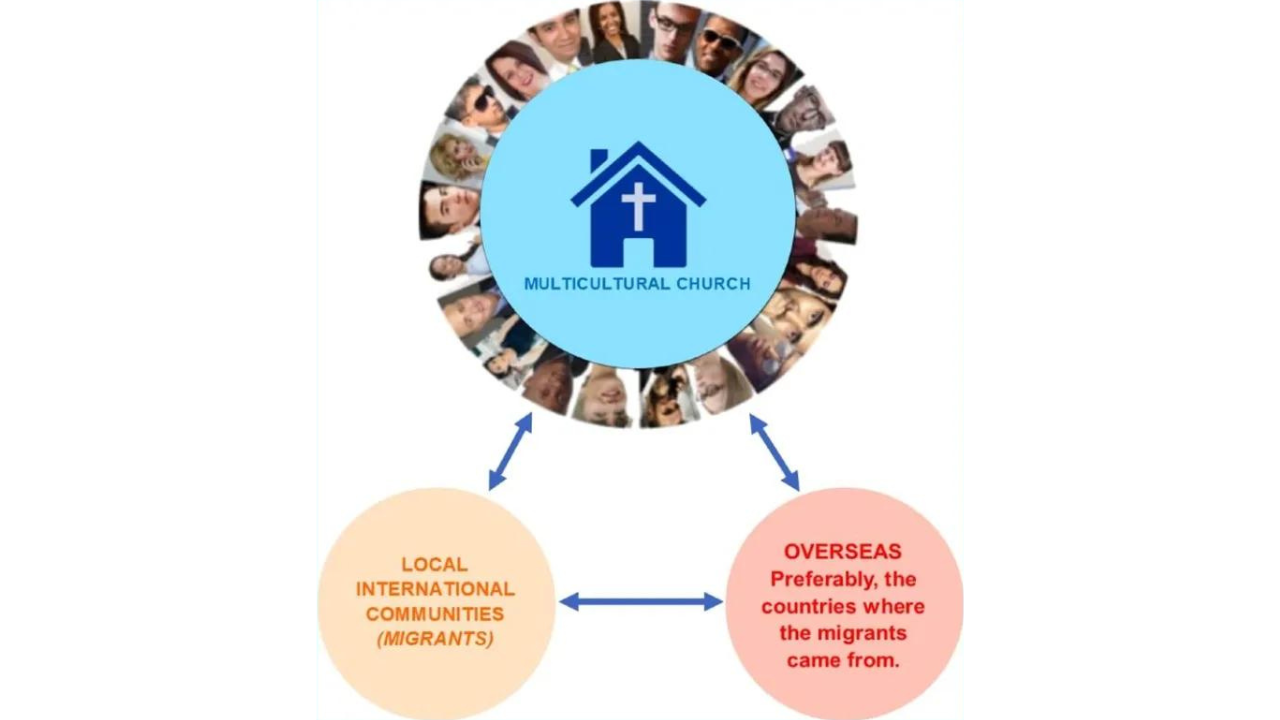
I first published the diagram above in the article “Multicultural Church Doing Missions Together Local and Abroad”. I mentioned that I based it on the history of the Convention of Philippine Baptist Churches.
In 1898, the Baptist mission in the Philippines started through a Swedish missionary (Eric Lund) doing the mission with a Filipino (Braulio Manikan) in Spain.
Dr. Elmo Familiaran, co-author of the book, “No Greater Love; Triumph and Sacrifice of American Baptist Missionaries During WW II Philippines, and the Martyrdom in Hopevale” shared with me that in his research through the International Ministry archives, he learned that it was not until the turn of the 20th Century, the beginning of the American colonial period, that Protestant missionaries came to the Philippines.
"Eric Lund was the first missionary the ABFMS (American Baptist Foreign Missionary Society) sent to the country in 1900. In 1894, Eric Lund met in Barcelona a young Visayan native of Panay Island named Braulio Manikan. Manikan had gone to Spain to study civil engineering. He was raised a Roman Catholic and became a Baptist under Eric Lund’s tutelage. Together, they went to the Philippines and established the first Baptist mission on Panay Island in 1900. In February 1901, the first Baptist church in Jaro, Iloilo City (Philippines) was organized". – Elmo Familiaran
The list below corresponds with the 2018 Multicultural Church Missions Model NZ diagram.
– Multicultural Church – Swedish Eric Lund and Filipino Braulio Manikan joined a local Baptist church in Spain.
– Local International Communities – Braulio Manikan (a migrant in Spain)
– Overseas – In Spain, Eric Lund and Braulio Manikan planned and executed bringing the Gospel to Iloilo, Philippines, in 1900.
When I created the diagram above in 2018, I had not read about Rev. Alexander Don and his ministry with the Chinese settlements in the Otago and Southland area in the 1880s.
When we visited the Arrowtown Chinese Settlement in October 2021, I learned about Rev. Don through the information board on the historical site.
Please look at the two ministry diagrams to see the similarities. The ministry strategy developed around 140 years ago through Rev. Don and the Presbyterian Mission is relevant today because it is like the mission diagram created in 2018.
The only difference between Don’s diagram and the 2018 version is that the latter was based on a migrant pastor’s observation.
Afterthoughts
Nevertheless, he left not himself without witness, in that he did good and gave us rain from heaven, and fruitful seasons, filling our hearts with food, and gladness. Acts 14:17 (GNV)
As the Biblical historical narratives taught us and from what we have learned from the Arrowtown Chinese Settlement (or other Christian mission narratives), the Lord God has never left us without a witness. His handiwork is written and shown everywhere, regardless of how unpleasant or tragic the situation was.
Rather than neglecting and ignoring history's unpleasant realities, we can also look back and “ask, seek, and knock,” as Matthew 7:7-8 says.
In our query, we can use some tools (e.g., faith-wisdom tool) to see what God teaches us. Once we discover history’s lessons, we also need humility and a servant's heart to follow God’s clear guidance.
I am pleased to learn about the Presbyterian Mission amongst the Chinese gold miners, particularly Rev. Alexander Don’s ministry in the 1880s because it affirms what I presented in 2018.
Now, I can say that the 2018 multicultural mission model that I created and presented on many occasions to the local and national Baptist church leaders is not something that a Filipino-Kiwi pastor had solely made up.
A Scottish-Australian missionary, Alexander Don, implemented the idea 140 years ago in Otago, Southland, and other New Zealand regions.
Was the mission to the Chinese settlers successful? Let me leave you with this excerpt from Susan Chivers’ thesis:
"Despite all the obstacles and failures, the Mission exerted a profound effect. At least its primary aim was accomplished – the Christian gospel had reached Chinese ears. The converts may have been few but they were genuine. Timothy Fae Loie compared the work to that of the miners they were trying to convert: – they would sift through hundreds and hundreds of tons of mud, sand, and stones and when the work was over, all they had to show for it was a handful of yellow dust – but that dust was gold".
I am thankful for the Holy Spirit, who guided me in gleaning faith-wisdom nuggets from the distant past on the lives of the Chinese gold miners and the ministry that Rev. Don undertook with them.
I pray and hope that our local churches will share these golden Arrowtown Chinese Settlement lessons with our present and ever-growing multicultural environment in the church and community.
References
James Ng. ‘Don, Alexander,’ Dictionary of New Zealand Biography, first published in 1993. Te Ara – the Encyclopedia of New Zealand, https://teara.govt.nz/mi/biographies/2d13/don-alexander (accessed 24 November 2021)
Chinese gold miners and Reverend Alexander Don at the Kyeburn diggings, Otago. McNeur Collection: Photographs of Chinese gold miners who worked in Otago and Southland goldfields. Ref: 1/2-019156-F. Alexander Turnbull Library, Wellington, New Zealand. /records/22883508
Presbyterian Research Centre, Presbyterian Church of Aotearoa New Zealand. Mission to the Chinese Gold-miners. https://pcanzarchives.recollect.co.nz/nodes/view/8056
University of Otago (n.d.). Alexander Don’s ‘Roll’ of the Chinese. https://www.otago.ac.nz/history/don/index.php
Chivers, S. L. (1992). Religion, ethnicity and race: the mission of the Otago Church to the Chinese 1860-1950 (Thesis, Master of Arts). University of Otago. Retrieved from https://hdl.handle.net/10523/336
Photo credits: Jonan Castillon
